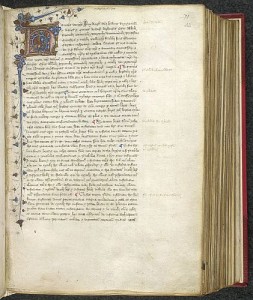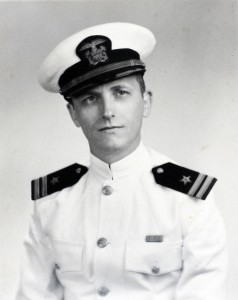 In Alabama, one seldom has a chance to examine the papers of a state trial court judge. Circuit judges don’t often leave behind collections for posterity—less so, certainly, than their counterparts on the appellate bench. The Bounds Law Library recently received the papers of Judge Cecil M. Deason (1903-1994), who lived in stirring times and found himself in the middle of historic events. The following was written by Research Assistant Ethan Wilkinson (UA Law, 3L; BA, Birmingham Southern College). He also was the primary arranger of the Deason Collection.
In Alabama, one seldom has a chance to examine the papers of a state trial court judge. Circuit judges don’t often leave behind collections for posterity—less so, certainly, than their counterparts on the appellate bench. The Bounds Law Library recently received the papers of Judge Cecil M. Deason (1903-1994), who lived in stirring times and found himself in the middle of historic events. The following was written by Research Assistant Ethan Wilkinson (UA Law, 3L; BA, Birmingham Southern College). He also was the primary arranger of the Deason Collection.
The University of Alabama Law Library Special Collections recently acquired the papers of Cecil Deason, a long time Solicitor and Circuit Judge in Jefferson County. The collection, consisting predominantly of newspaper clippings, photographs, judicial materials, and an assortment of other items, covers most of Deason’s adult life, including his service in World War II, his time in the Solicitor’s Office in Jefferson County, and his tenure serving on the bench in Alabama’s 10th Judicial Circuit.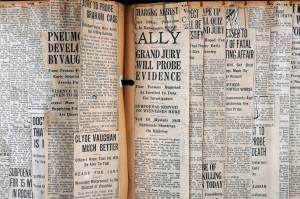
Cecil Deason was born in Bessemer in 1903. He graduated from the University of Alabama School of Law in 1929 and returned to Birmingham to begin a private practice. Two years later he was appointed Solicitor to the Jefferson County Court of Misdemeanors. It was during this time that Deason constructed his first scrapbook, revealing his fascination with both high profile crimes and the judicial system, recording any and all newspaper articles that related to highly publicized crimes, the Alabama court system, or trials that caught the newspapers’ attention. Deason enlisted in the U.S. Navy in 1941, serving as a staff intelligence officer in the Pacific and eventually rising to the rank of Commander by the end of World War II. During his time in the service, Deason kept a meticulously detailed photographic record of his wartime experience, in particular chronicling his stay in the Philippines. The snapshots, arranged into a large photo album, paint a vivid portrait of both the brutality of the conflict and the workaday atmosphere of camp life, each juxtaposed against the jungle background of the South Pacific islands.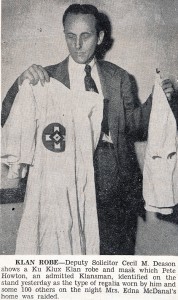
After the War, Deason returned to the Solicitor’s office in Birmingham. During this time the future judge made a name for himself as an anti-crime force in the state. In particular, two cases propelled Deason’s name into the headlines and laid the foundation for his future rise to the judiciary: the prosecution of Ku Klux Klan members for attacking and flogging a woman in northern Jefferson County in 1949 and the prosecution of Albert Fuller for the assassination of Democratic Attorney General candidate Albert Patterson in Phenix City in 1954.The Klan case drew a national spotlight to Birmingham, where a rash of cross burnings and attacks had swept the area in the early summer of 1948. One of the victims, Edna McDana of Adamsville, identified one the masked attackers who broke into her home and flogged her. However, despite Deason’s and Chief Solicitor Emmett Perry’s best efforts and McDana’s testimony, Coleman Lollar was acquitted by an all-white jury after just an hour and a half of deliberation. But the trial broke headlines across the country and put both Deason’s and Perry’s names and faces (often holding Klan robes up for the jury to inspect) in papers from New York and Chicago. Deason would later receive hate mail from as far away as New York, some writers attacking him for prosecuting a white man and others accusing him of not doing enough to gain a conviction.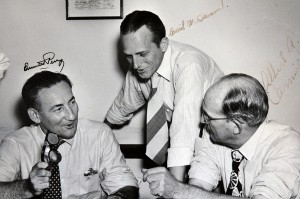
Deason gained further notoriety for the prosecution of Phenix City Deputy Sheriff Albert Fuller for the murder of Albert Patterson. Patterson had just received the Democratic nomination for Attorney General in a hotly contested primary, campaigning on a promise of saving Phenix City, his home town in Russell County, from the clutches of the local (and incredibly corrupt) political machine. Fuller, Circuit Solicitor Arch Ferrell, and outgoing Attorney General Si Garrett were indicted for the murder, though the latter two were ultimately acquitted. The case was moved to Birmingham to shield the proceedings from the corruption of Russell County’s judiciary, and Deason was appointed special prosecutor for the case by Attorney General John Patterson, Albert’s son. Although Fuller was defended by Roderick Beddow, then the most eminent defense attorney in the state, Deason secured a life sentence in a trial that gripped the state’s attention. Within months of the trial’s conclusion, the younger Patterson cleaned out the city’s corruption in a move that would send him to the governor’s mansion in 1959, and Deason cemented his legacy as a hard line prosecutor worthy of serious consideration for judicial office.
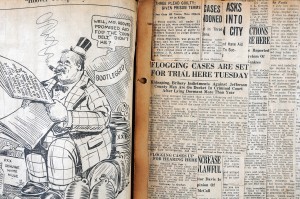 Deason was appointed to the specially created 10th Judicial Circuit in 1961 after receiving votes of confidence from both the Alabama State Bar Association and the Alabama Association of Circuit Judges. He served that seat for over a decade, eventually becoming a prominent member of the Circuit Judges’ Association and a vocal leader of the judicial reform movement of the late 1960s and early 1970s, vehemently defending the jury system and pressing for increased salaries and resources for Alabama’s courts. When he retired in the mid-1970s, Judge Deason left a legacy reflected in the papers and numerous newspaper clippings he saved. His advocacy of tough justice for criminals and his stands on behalf of judicial reform were each underscored by a deep sense of duty and service to both the state and country.
Deason was appointed to the specially created 10th Judicial Circuit in 1961 after receiving votes of confidence from both the Alabama State Bar Association and the Alabama Association of Circuit Judges. He served that seat for over a decade, eventually becoming a prominent member of the Circuit Judges’ Association and a vocal leader of the judicial reform movement of the late 1960s and early 1970s, vehemently defending the jury system and pressing for increased salaries and resources for Alabama’s courts. When he retired in the mid-1970s, Judge Deason left a legacy reflected in the papers and numerous newspaper clippings he saved. His advocacy of tough justice for criminals and his stands on behalf of judicial reform were each underscored by a deep sense of duty and service to both the state and country.
